Water Plumes on Europa: The Discovery in Images
Hubble Detects Water Plumes
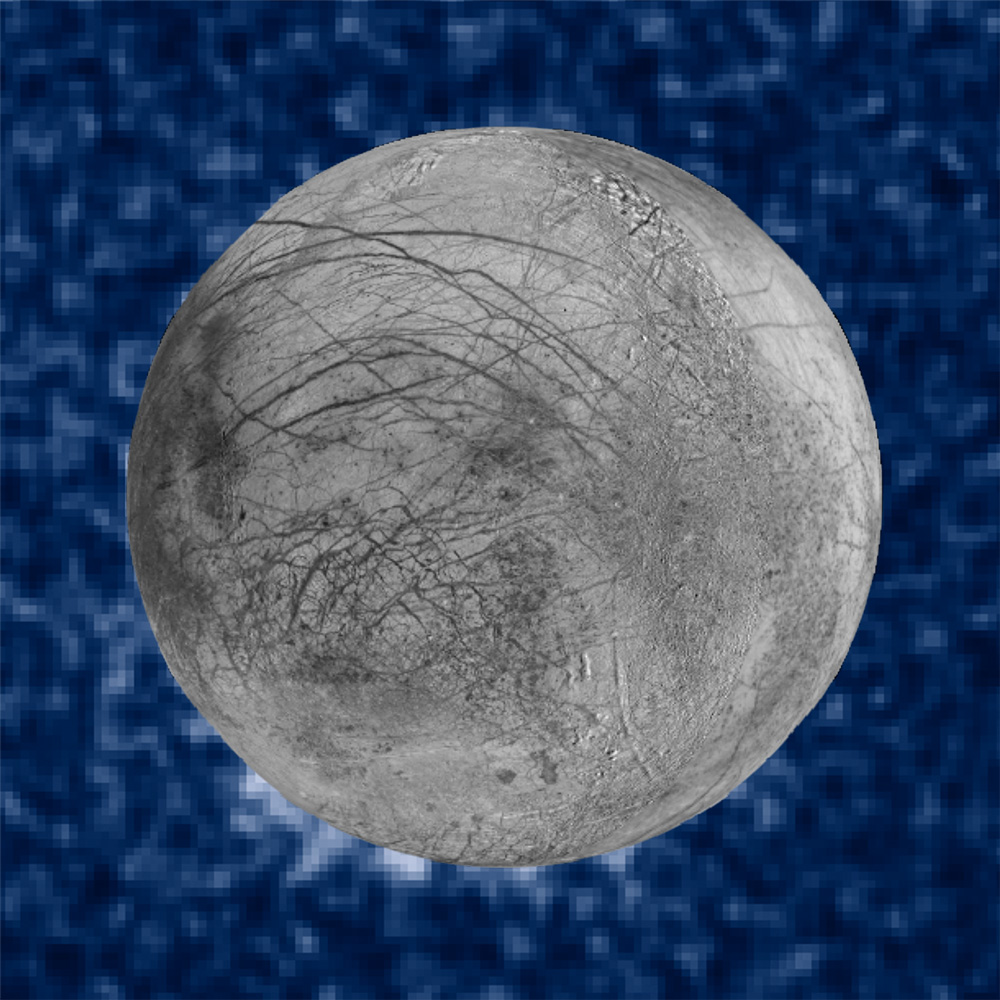
A suspected water plume erupts from Jupiter's icy moon Europa (visible at the 7 o'clock position at lower left) in this composite image taken by NASA's Hubble Space Telescope on Jan. 26, 2014. NASA unveiled the image on Sept. 26, 2016. Read the full story about Europa's water vapor plumes here.
Water Plumes on Europa in 2014
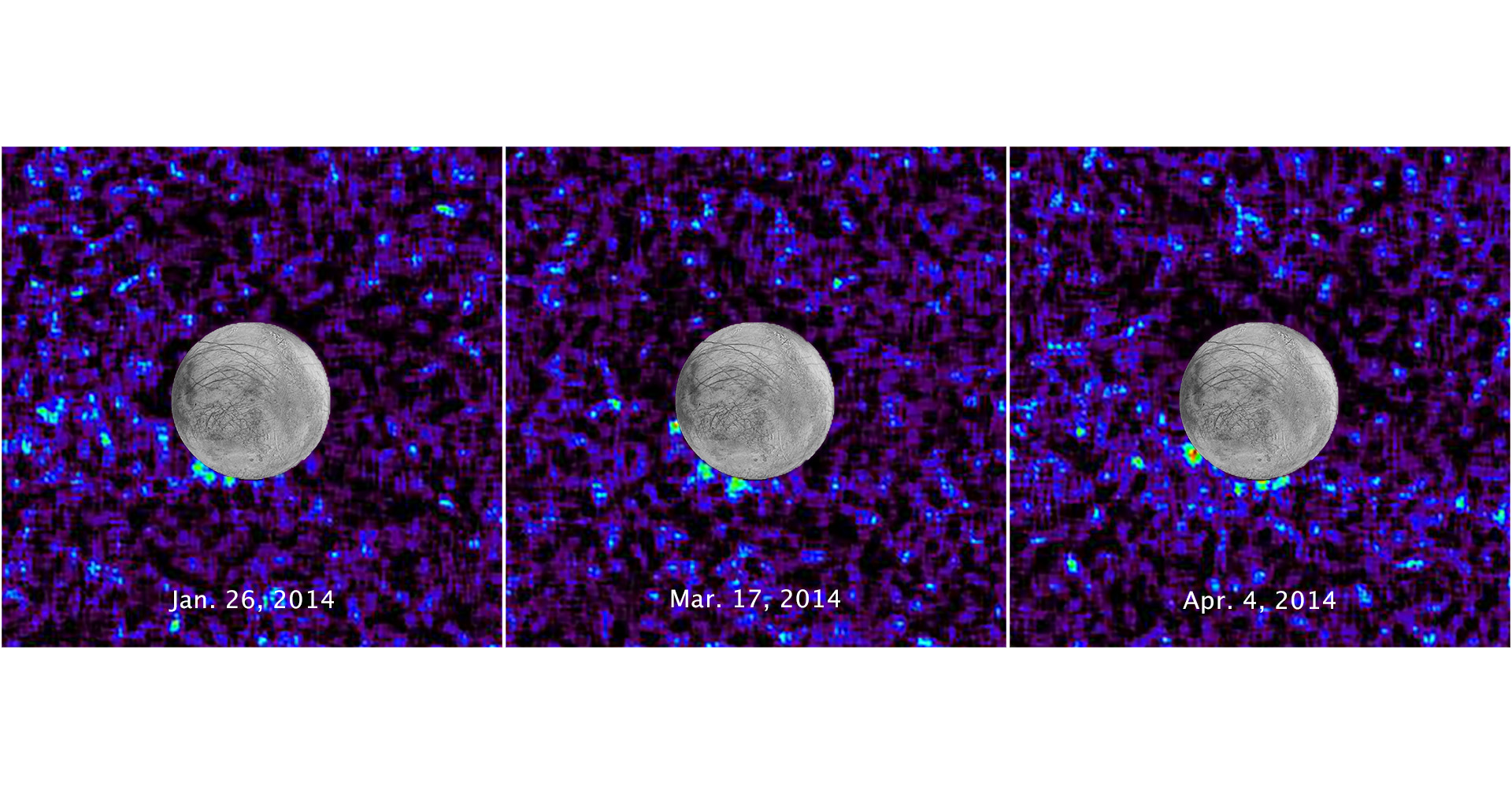
Scientists spotted evidence of water plumes on Jupiter's moon Europa in these three views by the Hubble Space Telescope taken between January and April of 2014. Hubble captured the water plume evidence (background), with a reference Europa image superimposed for reference.
Plumes on Europa: Artist's View
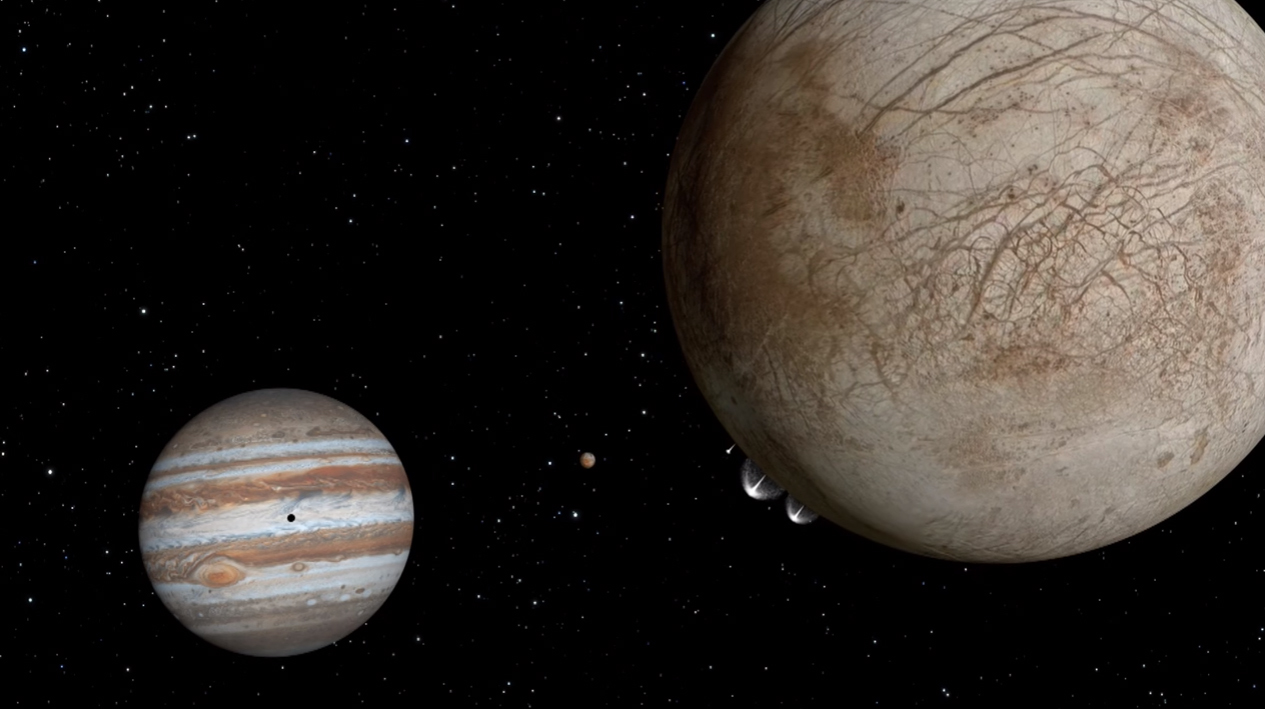
Scientists have long suspected that water plumes exist on Jupiter's moon Europa. The newly released images from the Hubble Space Telescope provide the most convincing evidence to date, and it could signal the presence of a subsurface ocean.
Europa Transit of Jupiter: Illustration
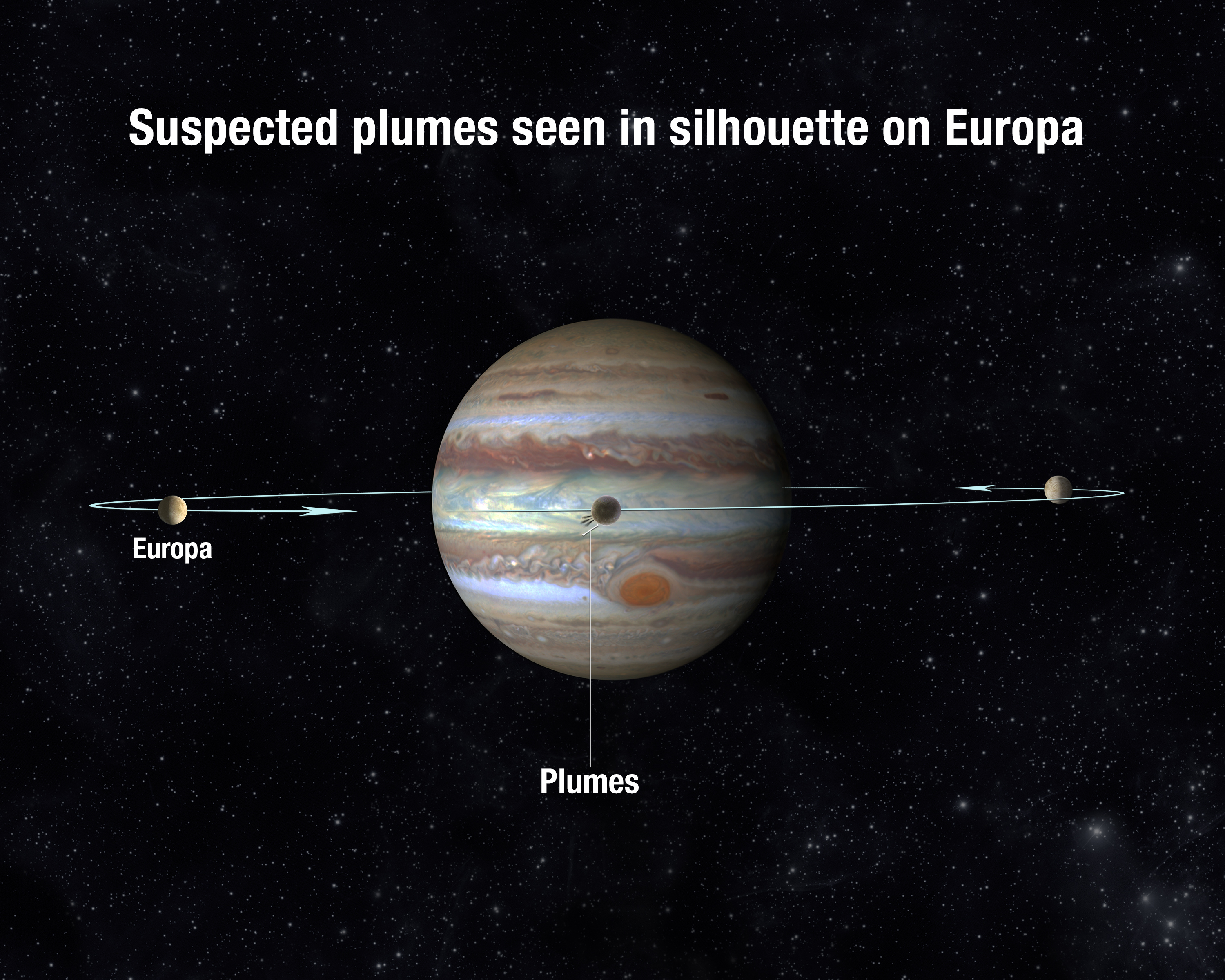
An artist's concept of Europa transiting across the face of Jupiter. Scientists observed Europa with the Hubble Space Telescope during such transits to spot signs of water plumes on the moon.
Hubble Sees Europa's Transit of Jupiter
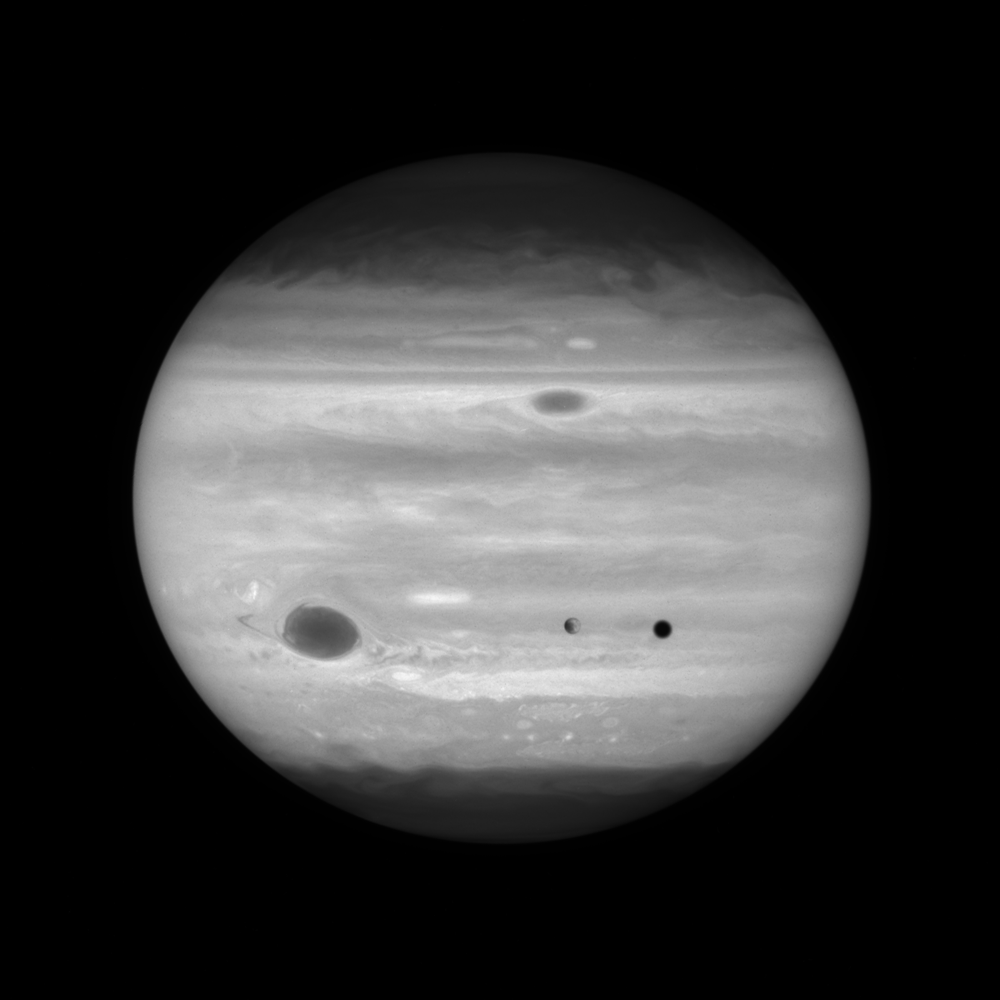
This Hubble image shows Europa crossing in front of Jupiter while Jupiter rotates behind Europa. This image is taken in near ultraviolet light.
Transit vs. Auroral Observations
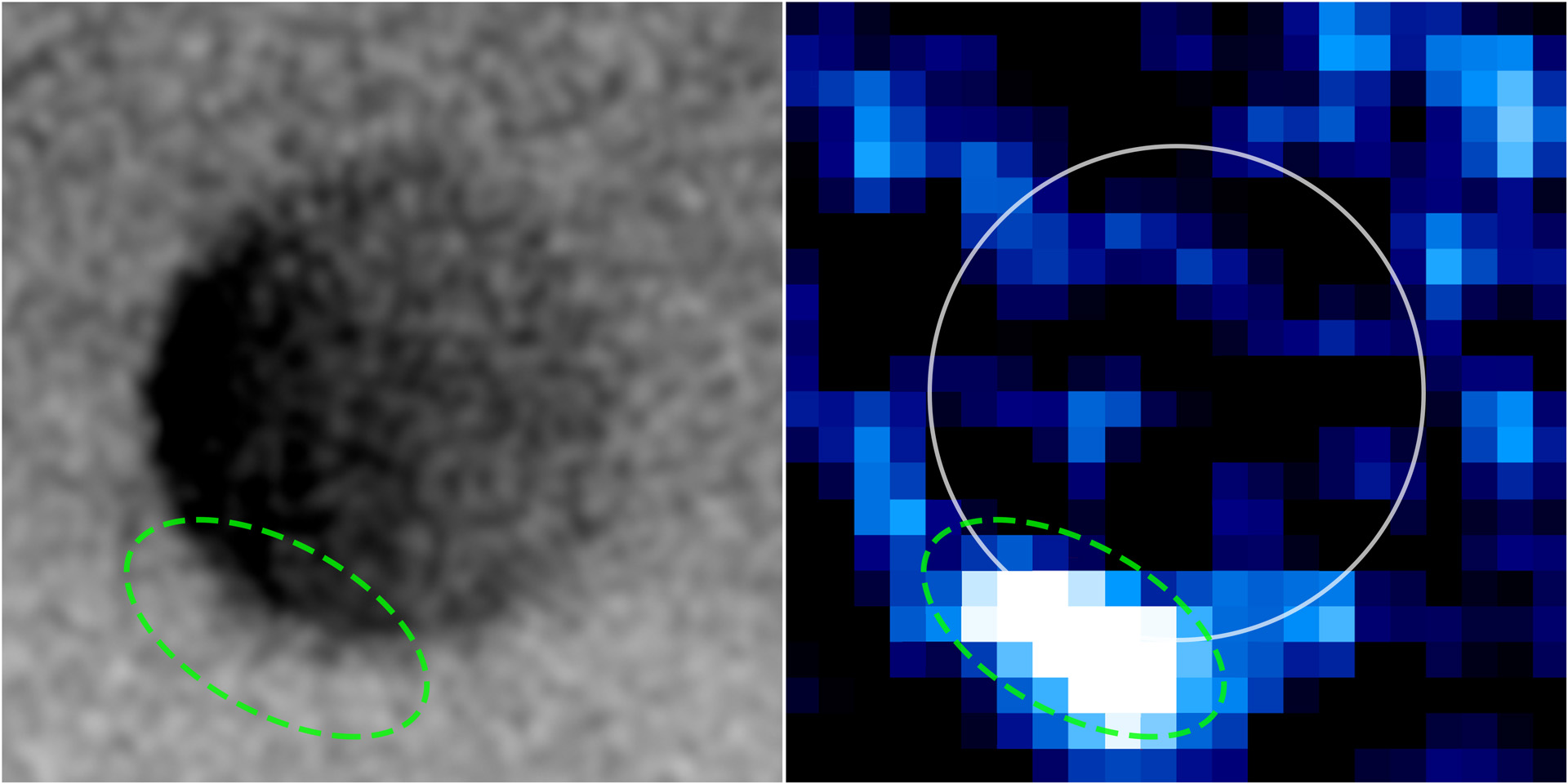
Two images of Europa created in 2012 and 2014 by separate research teams using different observation methods reveal activity at a common location on Europa. The transit image on the left shows dark patches of light absorption in the same spot where researchers later found auroral emission from hydrogen and oxygen, the dissociation products of water.
Europa's Complex Geology
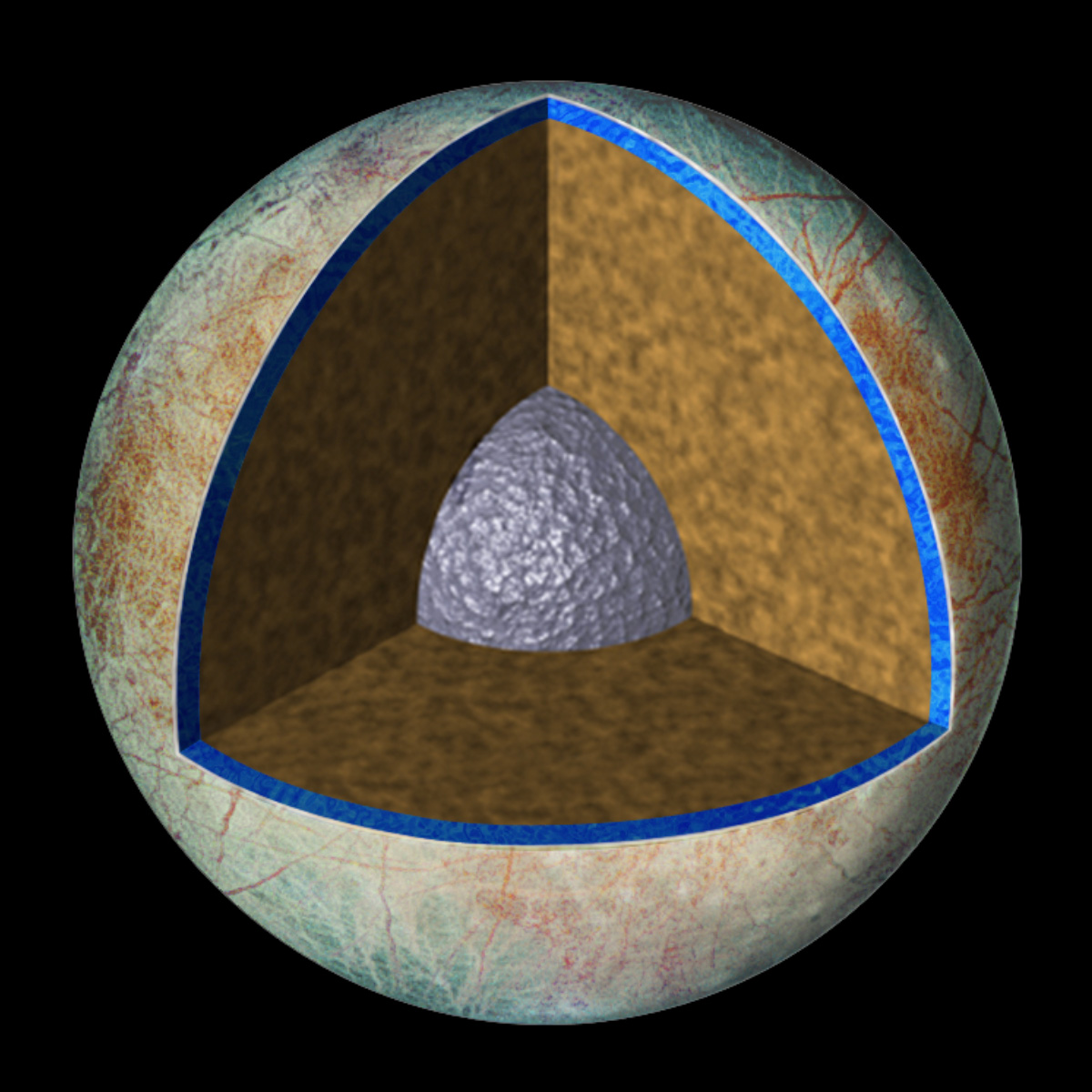
Compared to Saturn's moon Enceladus, Europa has a fairly complex geological structure. Beneath its icy crust lies a possible subsurface ocean with a volcanic seafloor.
Enceladus is Simpler
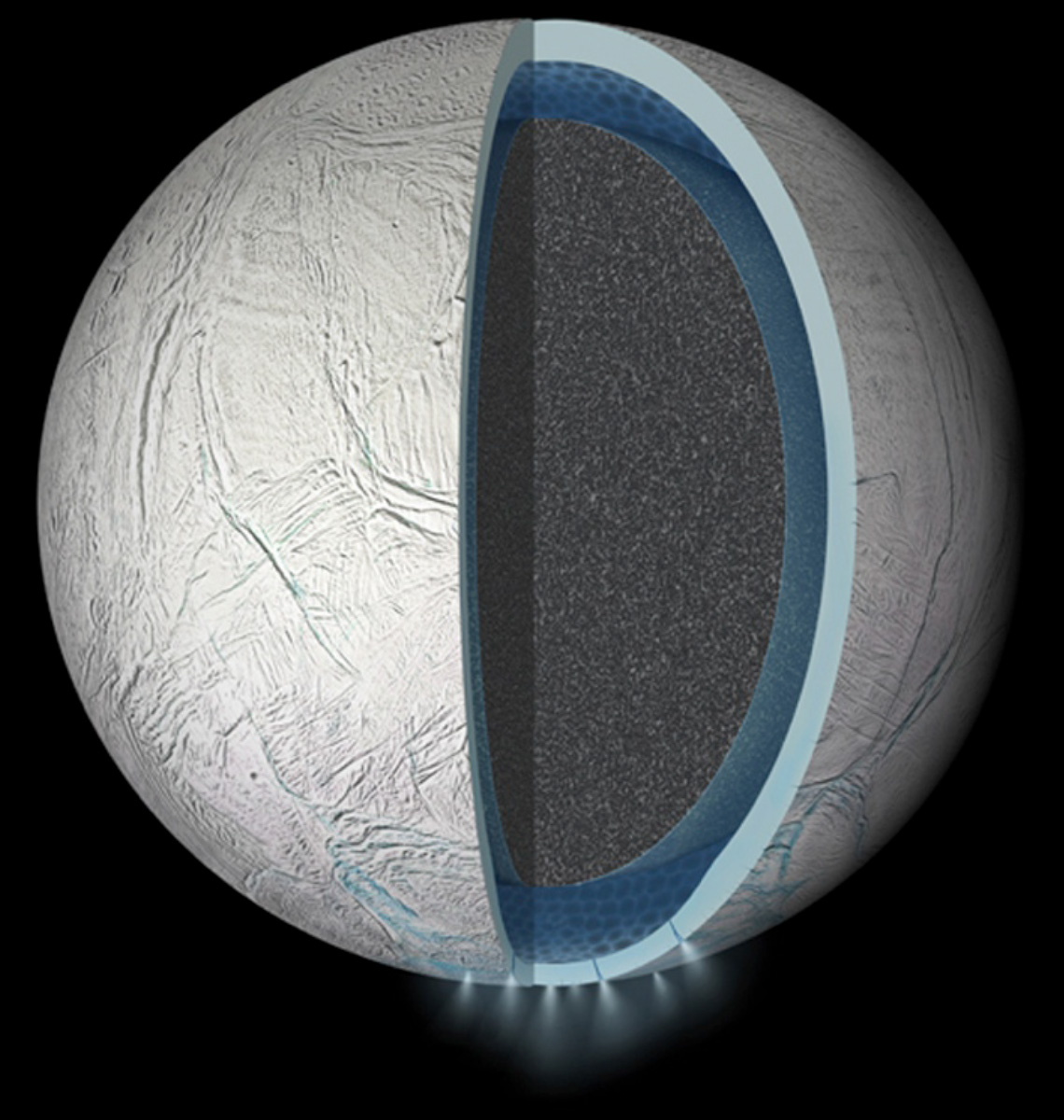
Enceladus, another moon with a possible subsurface ocean at Saturn, has a much simpler internal geological structure than that of Europa. [Inside Enceladus, Icy Moon of Saturn (Infographic)]
Chaotic Close-Up of Europa
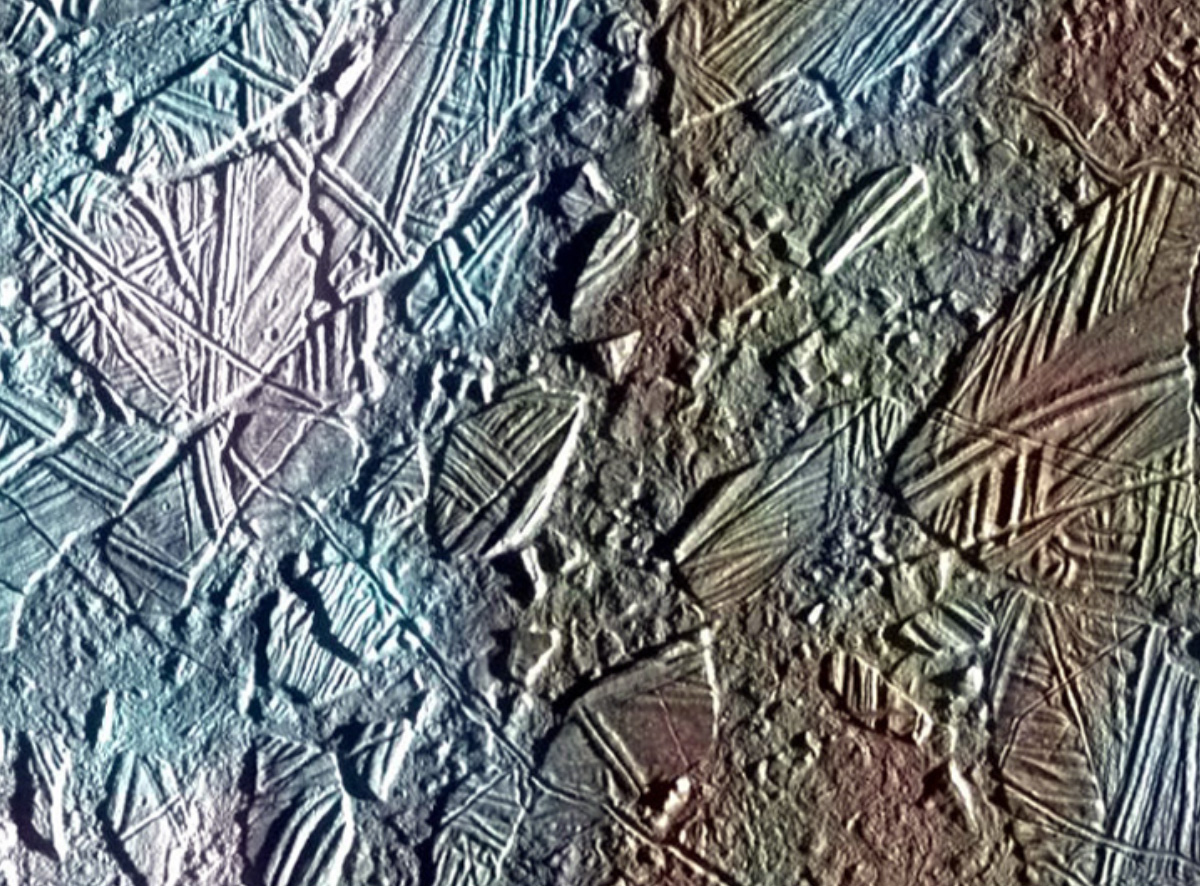
A close-up of Europa's surface reveals chaotic terrain with ridges, grooves and plains jumbled together across the icy moon's surface.
Ridges and Tides
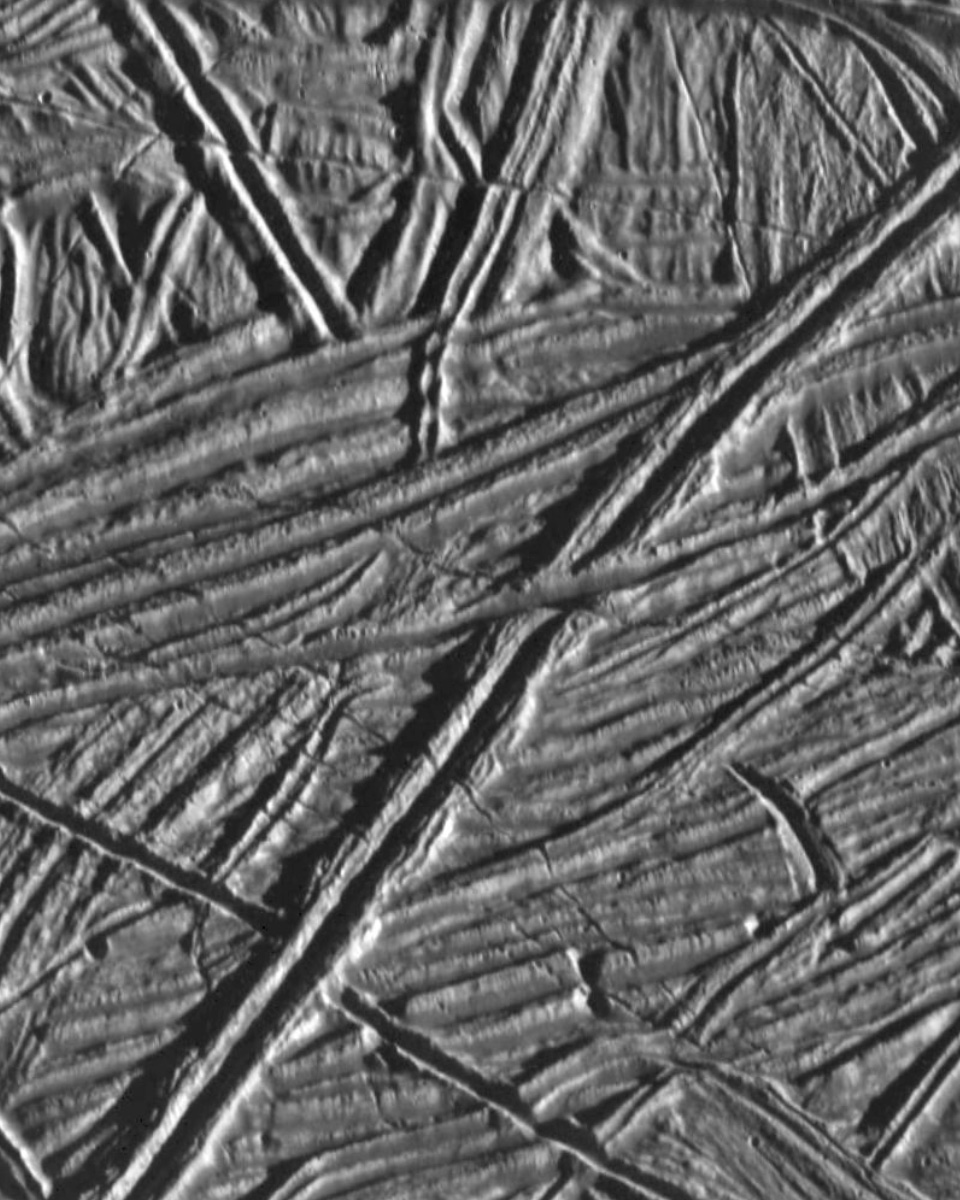
Cracks and ridges on the surface of Europa can reveal clues about the moon's geologic history as well as its possible subsurface ocean. These surface features are likely created by tidal forces from Jupiter, which cause the underground ocean to rise and fall similar to tides on Earth.
How Water Reaches Europa's Surface
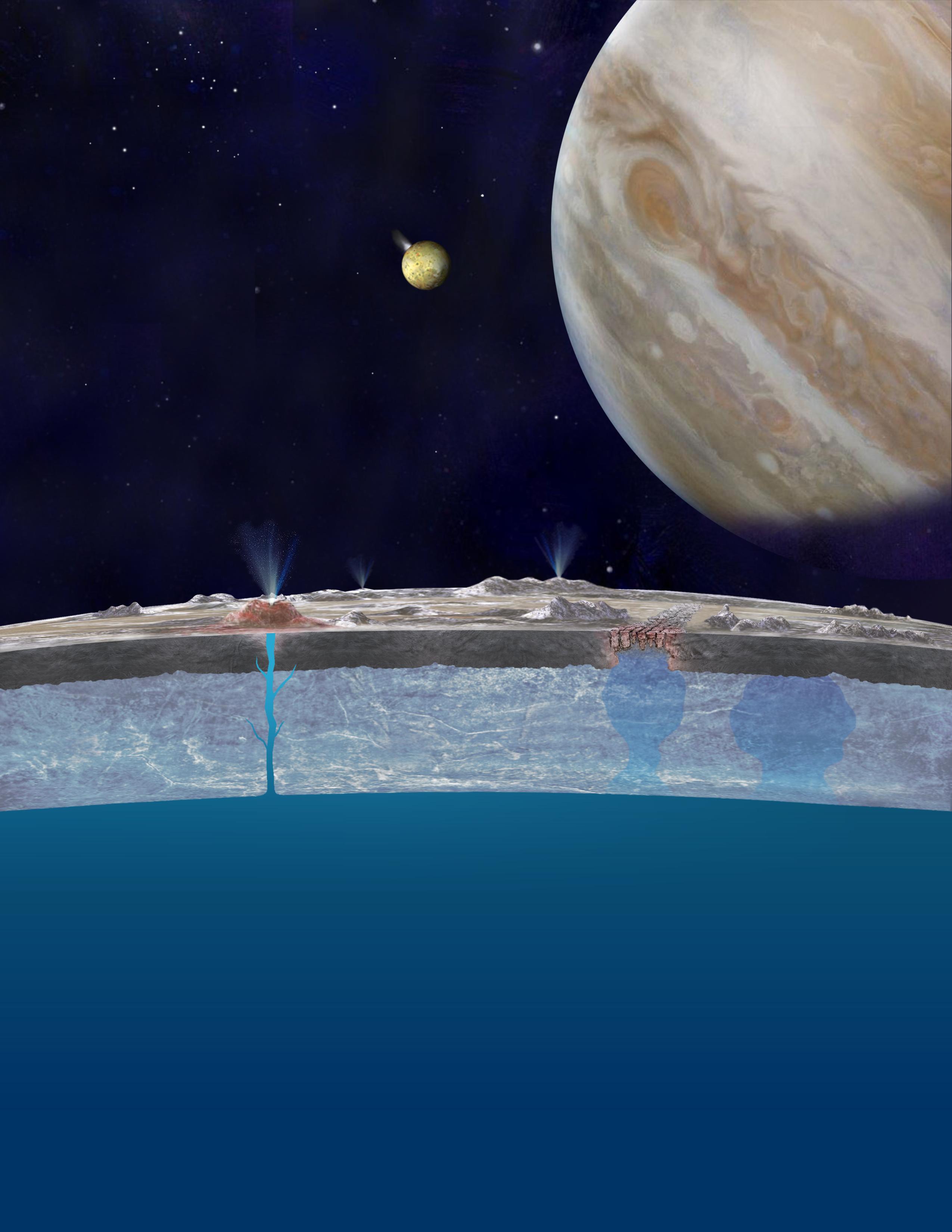
This illustration of ridges and fractures on Europa shows one possible way that water could reach Europa’s surface. Chloride salts in the underground ocean bubble up to the moon's frozen surface.
Join our Space Forums to keep talking space on the latest missions, night sky and more! And if you have a news tip, correction or comment, let us know at: community@space.com.
Get the Space.com Newsletter
Breaking space news, the latest updates on rocket launches, skywatching events and more!

Hanneke Weitering is a multimedia journalist in the Pacific Northwest reporting on the future of aviation at FutureFlight.aero and Aviation International News and was previously the Editor for Spaceflight and Astronomy news here at Space.com. As an editor with over 10 years of experience in science journalism she has previously written for Scholastic Classroom Magazines, MedPage Today and The Joint Institute for Computational Sciences at Oak Ridge National Laboratory. After studying physics at the University of Tennessee in her hometown of Knoxville, she earned her graduate degree in Science, Health and Environmental Reporting (SHERP) from New York University. Hanneke joined the Space.com team in 2016 as a staff writer and producer, covering topics including spaceflight and astronomy. She currently lives in Seattle, home of the Space Needle, with her cat and two snakes. In her spare time, Hanneke enjoys exploring the Rocky Mountains, basking in nature and looking for dark skies to gaze at the cosmos.
